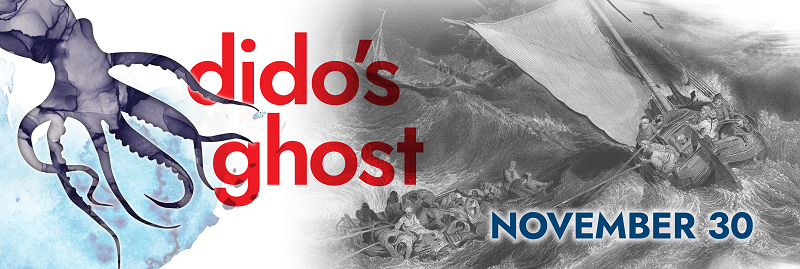
HYBRIDIZING ‘DIDO AND AENEAS’
SAN FRANCISCO—The imposing early English opera “Dido and Aneas” by Purcell came to us with an incomplete score for string orchestra. In an important U.S. premiere, the latest completion comes to us via Errollyn Wallen’s “Dido’s Ghost,” unveiled by Philharmonia Baroque at the Herbst Theatre in a semi-staged version. It turns a torso into an engrossing masque-opera of great vitality running nearly two hours in length, assuming you can follow the complex interweave of characters.
Purcell’s 17th-century drama, based on Virgil’s “Aeneid,” deals with the ill-fated love story, ending with the heroine Dido (decidedly the principal character) sending away her lover Aeneas and dying. Complicating the story is Aeneas’ malevolent wife Lavinia, several spirits, and various sorceresses/enchantresses and witches, mostly involved in messages from the gods and the supernatural. For better or worse, the Greek gods are never quite out of manipulative range. Most striking in Wallen’s additions is the storm scene with its vibrant string tremolos adding dissonance to Purcell’s placidity.
This operatic hybrid not only fills musical gaps but also introduces a stormy introduction and more dramatic finale, using just original instruments supplemented by percussion. You may still come away hopelessly confused as nine singers portray 14 different roles virtually without costume changes.
Stage director Frederic Wake-Walker however worked wonders, especially with singers’ choreographed arm gestures filling in for all the deleted dances. The cast featured lyric soprano Nicole Heaston in the title role, doubling as the sister Anna. The veteran bass-baritone Matthew Brook played Aeneas (an Aeneas whom we knew best as a tenor in Purcell) with gruff authority. Powering the musical drama was the malevolence represented by the forceful mezzo Allison Cook’s parts.
In the end, the lovers’ break-up heralds the end of a Greek-Trojan era and entry into a Roman-Italian realm (But spoiler alert: Much the same crew of meddling gods turn up over there as well.)
John Butt conducted the ensemble from the harpsichord console, sometimes playing the inaudible luxury keyboard (Please, authenticists, we now have microphones and amplification!). Of special interest in the orchestra was the long-necked, lute-like theorbo with its rich bass tones.
“Dido” relies heavily on choruses nimbly led by Valérie Sainte-Agathe.
Overall, the performance of Philharmonia’s ensemble and chorus was exceptional, with much of the feel of London performances more than three centuries ago—an enviable time-machine for music lovers.
In a Dec. 2 performance at Berkeley, the Philharmonia Baroque will use the same lead singers for the non-hybrid “Dido and Aeneas,” i.e., Purcell alone. And music lovers can then decide whether the adroit old-new hybrid or the real McCoy from London 1680s, chipped but serviceable, is preferable.
DIDO in profusion, by Philharmonia Baroque and Chorale. Nov. 30, US premiere of Wallen’s “Dido’s Ghost” at Herbst Theatre, S.F. Dec. 2, Purcell’s “Dido and Aeneas,” First Congregational Church Berkeley. For info: (415) 252-1288, or go online, www.philharmonia.org.